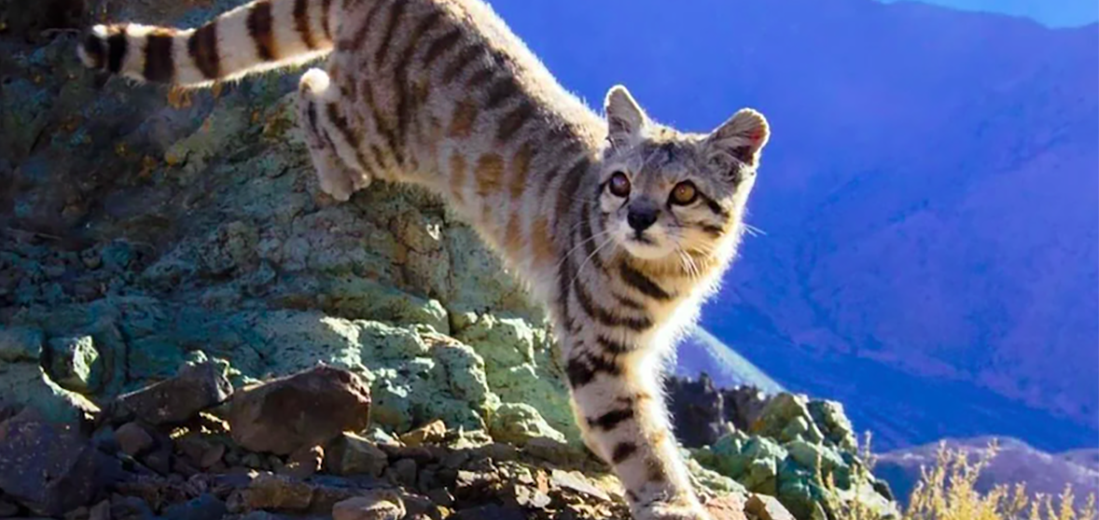
The Andean mountain cat, aka Andean cat or mountain cat, is an extremely rare feline species found in Bolivia and southern Peru over to northwestern Argentina, as well as northern Chile in the Andean mountains. They prefer semi-arid and arid regions located in the Andes Mountains. These kitties dwell just above the timberline, at just over the 13,000 foot elevation. The Andean cat can also be found in habitats that sport mountain grasslands with wet and grassy meadows which contain shrubs. With only an estimated 1,378 wild individuals remaining, these cats are listed as Endangered by the IUCN. This is due to habitat loss, hunting, trapping, and climate change. Their numbers are also decreasing.
First the Stats…
Scientific name: Leopardus jacobita
Weight: Up to 18 lbs.
Length: Up to 2.8 feet, plus up to a 19 inch tail
Height: Up to 14 inches
Lifespan: Up to 16 years
Now on to the Facts!
1.) These barely studied felines are notoriously hard to track and learn about. 1 was caught, in 2004 and then radio-collared. However, it died before much of the necessary information was obtained.
2.) There are no known captive specimens. So all the research done has been performed in the wild.
3.) Like most other cats, these critters are believed to be nocturnal (active at night).
4.) They are thought to only prey on mountain viscachas and chinchillas.
5.) As is typical of most cats, the Andean cat is solitary; only coming together to mate.
But wait, there’s more on the Andean mountain cat!
6.) A group of cats is called a clutter, pounce, destruction, or clowder.
7.) Mating season is believed to last from July – August.
Did you know…?
Due to bones in their throats being close together and hardened, small cats cannot roar. And contrary to small cats, large cats can only purr while exhaling; unlike smaller cats that can purr continuously while breathing in and out.
8.) It is presumed that females birth 1 – 3 kittens.
9.) Andean locals call these cats, “huana titi”. This translates to ‘the cat from dry places’. Appropriate, considering it’s locale.
10.) First described in 1865, the information about these cats (until recently) had solely been based off of information gathered from 3 skull samples, 2 photos, and 14 samples of their skin.
Now a Short Andean Mountain Cat Video!
Be sure to share & comment below! Also, check out the Critter Science YouTube channel. Videos added frequently!
Want to suggest a critter for me to write about? Let me know here.



